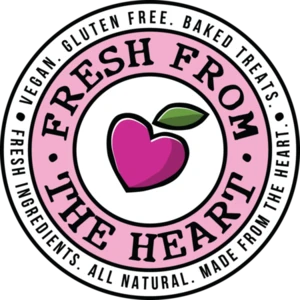What You Need To Know About Reading Food Labels When You Have Food Sensitivities

If you have a food allergy, sensitivity or intolerance, reading food labels is important to prevent you from eating an ingredient you’ll react to. That said, it can be tough to decode some food labels. Here’s a breakdown of some things to watch out for when you’re reading labels:
Laws You Should Know
While there are some laws in place to protect those who have allergies, not every allergen is included in the legislation, so it’s important to know what is law, and what’s not!
The FDA allergen law requires food manufacturers to label whether or not a packaged good contains the top 8 allergens (which we’ll discuss more below). Any food sensitivities that fall outside the most common allergens aren’t included in the law. This is why it’s important to read through the entire ingredient list before committing to a product.
Skip Straight To The Back
Sure, food brands want you to read the front of a package, that’s where they try to get your attention! But, when it comes to allergen information, skin straight to the back (or the side, depending on the packaging). Wherever the nutrition information is written, is where you’ll find allergen call-outs.
Read the Label, Every Time!
Even if you’ve purchased a product in the past, check the label every….single….time. While most manufacturers inform customers about process or recipe changes, they’re not required to do so. This means that some food manufacturers may change facilities, operations or ingredients, without letting you know. Keep yourself informed, by checking the packaging every time.
The Top 8 Allergens
Food manufacturers are required to let you know, in plain English, on-pack, if their foods contain the top 8 allergens. These ingredients include:
- Milk
- Egg
- Peanuts
- Tree Nuts
- Wheat
- Soy
- Fish
- And Crustacean Shellfish
What About Coloring, Flavors, and Preservatives?
If you look at the tail end of many recipe lists, you may find ‘coloring’ ‘flavors, or ‘preservatives’ included. But, what exactly does this mean? The answer isn’t super simple!
There are lots of ingredients that can be grouped into these categories, and a food manufacturer doesn’t need to give you a full breakdown in the ingredient list.
Maybe they don’t want to make it widely known what’s included in their preservative blend, or maybe they consider their flavor combo proprietary information. Whatever the reason behind their labeling choices, it’s a good idea to seek out more information if you see similar terms in an ingredient list and you have a food sensitivity that’s not included in the Top 8 Allergens.
GMO’s On The Label
If you see an icon or phrasing about GMOs, remember that labeling standards are constantly changing, especially when it comes to GMOs. Sometimes they’re referred to as ‘genetically engineer materials.’ Other times, ‘genetically modified ingredients.’ That said, the FDA does have some requirements when it comes to genetically modified ingredients. Read more about it here.
Is It Organic?
If a product is labeled ‘certified organic,’ the ingredients and end product must be entirely organic and verified by a third-party organization. But things can get a bit tricky when a company chooses not to go through the often costly organic certification process.
Just because a product doesn’t include a ‘certified organic’ label on the packaging, doesn’t mean it’s not made with organic ingredients. Independent operations may choose organic ingredients and forgo the certification process. And this is why it’s always a good idea to reach out to a food manufacturer when you want to know more about their ingredients, especially if eating organic is a priority for you.
Understanding Kosher and Passover Labels
Food that meets Kosher dietary requirements are labeled ‘Kosher,’ and will include a Kosher-safe symbol on the packaging. If you see ‘Pareve’ printed near the Kosher label, you can rest assured that the product is also dairy and meat-free. That said, not all manufacturers choose to include these labels, and do so at their own discretion. Here’s an article with a great breakdown on Kosher food labeling, if you’re interested in reading more.
What to Know About Special Diets
If you live a low-carb lifestyle and prescribe to Ketogenic or Paleo diet plan, you obviously want to look for foods that are low in carbs. But what’s ‘low-carb’ to one food manufacturer, may not be ‘low-carb’ to you! There’s little regulation when it comes to calling something ‘Keto-friendly’ or ‘Paleo’ on a food package. So, to avoid eating food that’s not a part of your diet plan, check the food chart on the back to determine if that carb count is indeed ‘low-carb’ enough for your lifestyle.
At Fresh From The Heart, we work hard to ensure our food labels are easy to read and understand. We offer cookies that are allergy-friendly, vegan,nut-free, low-carb, and Passover-appropriate. But if you have questions about any of our recipes or ingredients, don’t hesitate to reach out! We’re more than happy to answer your labeling questions. Or, find answers to some of our most frequently asked questions here.